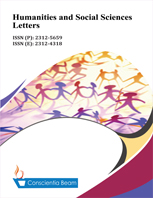Short-Run Dynamics between Trading Participants in Bursa Malaysia During QE and Post-QE Exit
DOI:
https://doi.org/10.18488/journal.73.2019.74.225.237Abstract
This study investigates the trading dynamics between institutional, foreign and retail investors during Quantitative Easing (QE) Tapering and post-QE exit. An analytical framework is developed to classify all transactions into trading, short-selling or information flow. Notably our results show: Firstly, during QE tapering, there is short-selling by Foreign Investor. Foreign Sales also provides cue to Local Institutional Sales. Net buyers are Local Institution; Secondly, in Post-QE exit, Foreign Sales is the most endogenous variable. Net sellers are Foreign, followed by Local Retail; Thirdly, from 7 to 12 months in Post-QE exit, there are short-selling by Foreign and Local Institution corresponding to sharp market downtrend. Net sellers are Foreign and Retail. Overall, Local Institutional is the net buyer in all sub-periods while Foreign fund is the net seller during Post-QE periods. Our result recognizes the importance of Local Institutional Investors in withstanding the selling pressure of foreign investors during the QE exit periods. This paper contributes to the extant literature by providing the usefulness of trading participant statistics to market players in the backdrop of market uncertainty due to QE exit.

